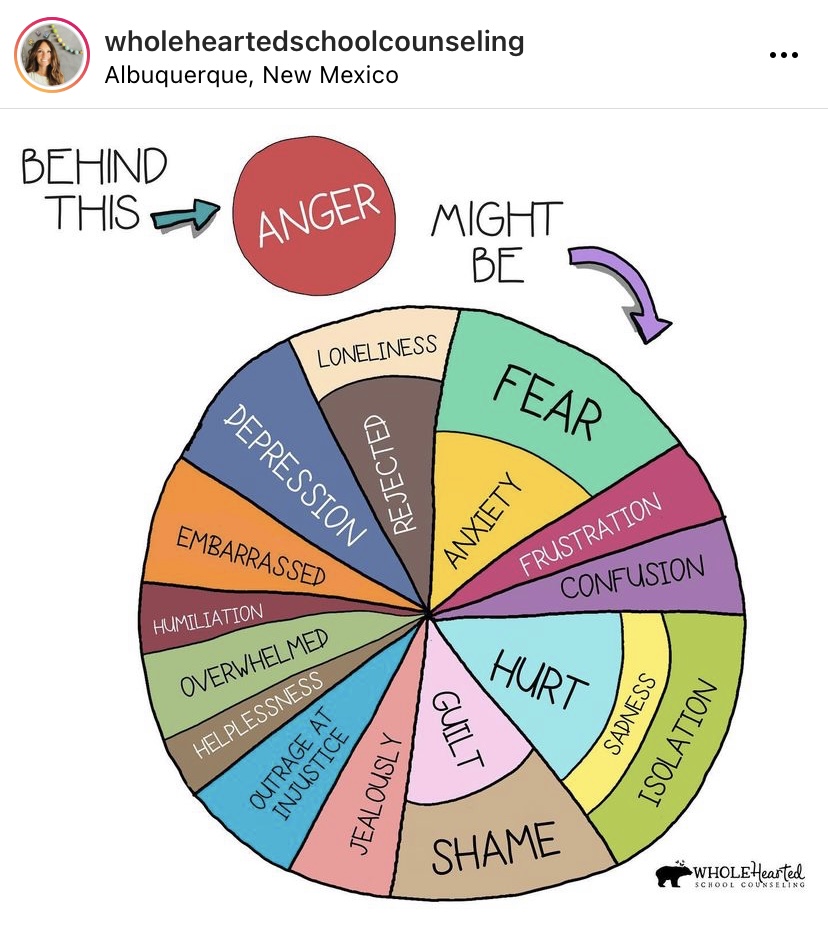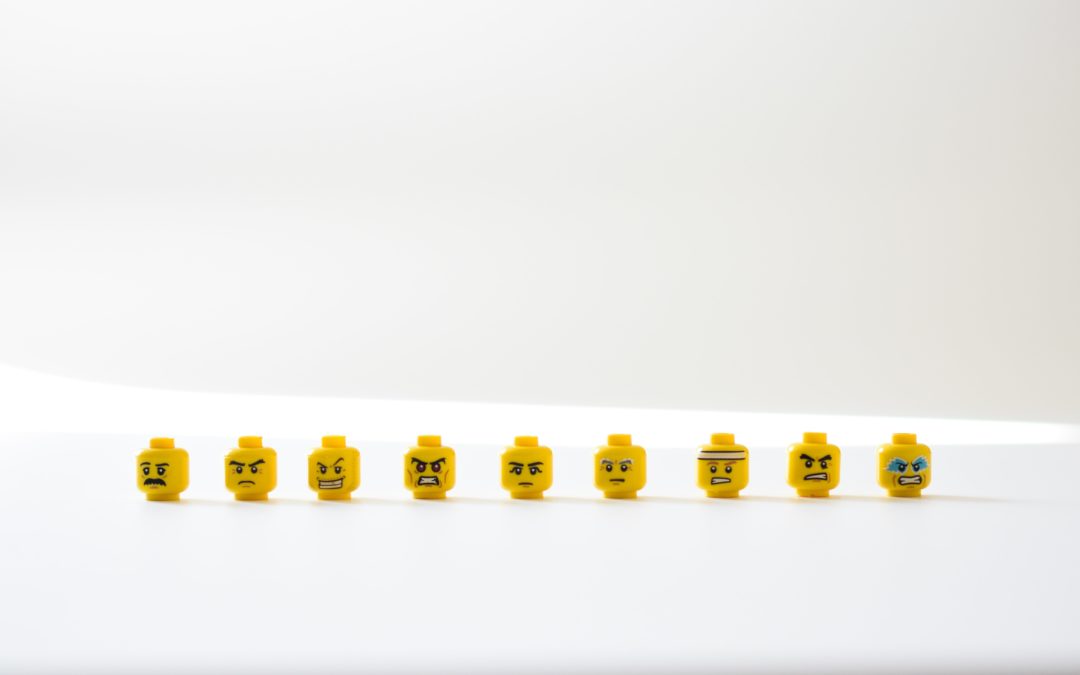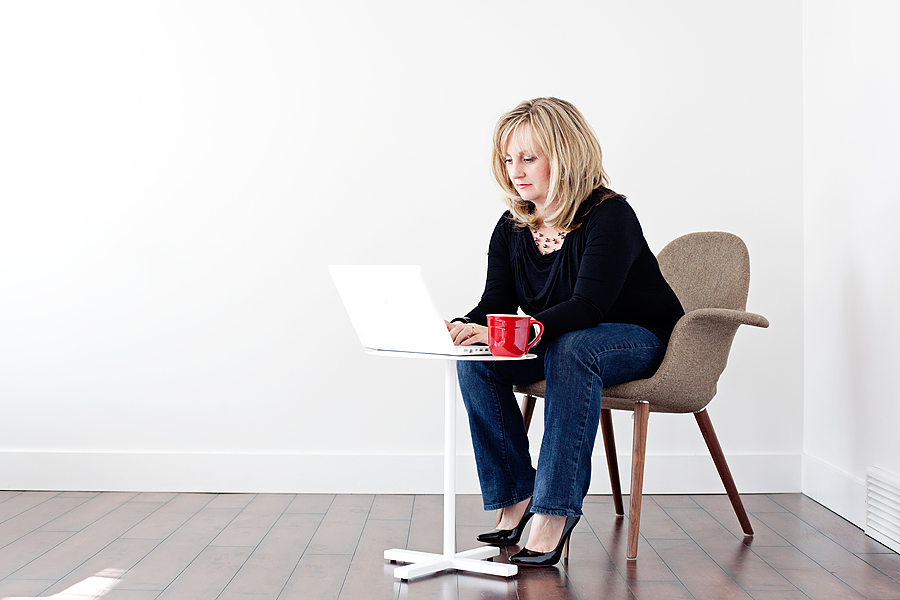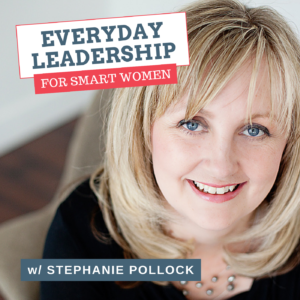For most women, anger isn’t an emotion we’re particularly comfortable with.
Many of us were raised to believe that women should be kind, quiet and acquiesce to the needs of others. And when we did show anger or frustration, we were often told to calm down, relax or to stop being so difficult. Good girls don’t get mad or loud, remember?
As a result, anger can feel like a foreign emotion that we don’t entirely recognize when it starts to bubble up inside us. And so we often try to suppress it or call it something else, or we find it manifesting itself through tears, anxiety, sadness or passive-aggressiveness. We don’t name it as anger because we’re not supposed to be angry.
But I don’t think I’m reaching too far when I say that many of us ARE angry right now. Really angry.
Justifiably angry (she gestures wildly at the world around her).
I won’t get into specific politics here because it’s not the point of this letter (though things in Canada have certainly reached a fever pitch), but no matter where you fall on the political spectrum, you don’t have to look far to find people expressing their anger out in the world.
Instead, I want to talk about the anger itself and what it means when we find ourselves full of it and not sure what to do with it.
Last week, as I processed my own strong emotions about what was happening in our country’s capital city (Ottawa), I happened to listen to a two-part podcast with Brené Brown and Susan David around the dangers of toxic positivity. In it, they discuss how harmful it is to dismiss strong emotions like anger, fear and grief, by trying to replace them with gratitude, faith and positivity.
Before you push back, they aren’t suggesting (nor am I), that turning to gratitude, faith and positive thinking aren’t helpful strategies when we’re stuck in negative thought patterns. Of course they can be, as they allow us to see an alternate perspective or they help us search for the good. I did this last week when I was struggling with how to process the news.
Their point is simply that we can’t kid ourselves into pretending our feelings aren’t what they are just because they include emotions not everyone is comfortable with. In the episode, Brené shares her struggle with overwhelm and asks Susan if she should focus on feeling grateful instead. Susan says:
I am calling complete bullshit. In fact, what I’m suggesting is that when you do this, it makes you more fragile. Because then what you’re doing is you are not living in the world as it is, which is overwhelmed, weary, confused. You’re living in the world as you wish it would be, which is where you’re feeling grateful. But you’re not feeling grateful. And so, I have a real issue with this.
I truly — and you probably can hear how passionate I sound about this — I truly believe that a lot of this idea that difficult emotions need to be pushed aside is accounting for so much of our fragility in our communities and in our psychological health and well-being right now. When someone says to you, turn the piece of paper over and write what you are grateful for, what are they really saying? They’re really saying, “My comfort is more important than your reality.”
They are really saying, “Your comfort is more important than my reality.” Oof.
That is, in many ways at the heart of how many women experience the ‘good girl’ phenomenon, and why so many (including me) struggle having hard conversations, advocating for their own needs, calling out clear injustices and stepping into leadership roles.
(and why I’m hesitant even writing this letter to you)
I think part of the problem is that we tend to conflate (for women, I don’t see this happening often with men), anger and meanness. I can’t tell you how many Facebook memes I saw last week calling for us to be “nice and kind.” I get the sentiment, but I think it misses the mark because it assumes that two things can’t be true at the same time, nor can they be connected.
Kindness and niceness aren’t the same thing.
Niceness = I’ll say and do what’s required to avoid anyone’s discomfort, including my own.
Kindness = I’ll say and do what’s helpful and loving, even if it offers a hard truth.
I can be angry AND kind.
I can be angry AND compassionate.
They are not mutually exclusive states that I have to choose between; I can have, and be both at the same time. I’m all for encouraging kindness and compassion, but not as a cover for our real feelings nor as a way to keep things surface-level and nice.
As I said here on Twitter,
A reminder for all the women who, like me, were raised to be nice and polite:
You can be angry — full of rage even — and still be a kind, compassionate person.
They don’t cancel each other out.
Anger is often an expression of compassion in the face of injustice.
And I also deeply understand that expressing our anger can sometimes put us at risk.
We don’t have to look far on the interwebs to see examples of women who’ve vocalized anger and in turn received death threats, doxing, and disgusting messages in their DMs. Locally, one of our beloved community builders spoke out against the convoy and the vitriol that’s come her way is nothing short of appalling.
Grace Tame, last year’s Australian of the Year, received a threatening phone call telling her not to say anything damning about Prime Minister Scott Morrison at the recent Australian of the Year awards. At the awards, you can see Tame standing beside the Prime Minister, clearly angry – but quiet. The media had a field day following this, with as you can imagine, criticisms and commentary about why she wouldn’t ‘smile’ and why she looked so angry. She speaks out about this after and you can listen in here (first segment).
And we also know that anger is a particularly dangerous emotion for women of colour or any marginalized group to express publicly for fear of their own personal safety. As Priyanka Paul writes for Vogue:
To be angry is to have a unique privilege. It’s why we as a society had let authorities wield it unwontedly. It’s why, as binaries went, the same anger had been plugged, silenced, and demonised when it came from the marginalised.
It’s no wonder then that many of us avoid feeling or showing our anger – especially in public.
In Brené’s new book, Atlas of the Heart, she talks about the importance of anger in our psychological suite of emotions, but also how it is often a secondary emotion that indicates other, harder-to-name emotions underneath it. She cites this image and reference for clues as to what else might be going on.

Obviously there’s often more to our anger than just the white hot rage we feel when we’ve been wronged or an injustice has occurred. I think we can see how that’s played out globally over these past two years as we all deal (or avoid) feelings of fear, sadness, loneliness, anxiety, grief and confusion.
It’s not nothing to acknowledge that we’ve all faced tremendous changes and challenges, personally, inter-personally and collectively and so it’s entirely unsurprising that it’s showing up as pure rage as we grow weary and exhausted from holding such complex feelings for so long.
In the episode I referenced earlier, Susan talks about our feelings as being signposts to our values. They remind us about what matters most to us, and they offer signals when those values are being compromised. And they offer clues as to what we need to feel and to do next – even if it’s sparked by anger. She says:
There’s a body of research pointing to the idea that anger is foundational to moral courage. When you feel, not when you express, because there’s a difference. When you’re open to the feeling of anger, instead of saying, “Oh, I shouldn’t go there, I’m being negative,” when you’re open to the experience of anger, what does it do? It makes you more likely to stand up against bullies or to use your voice against injustice. So, this is this idea of emotions as signposts.
When I think about my own anger, here are the two questions I wrestle with:
➡️ In a world that tells me my anger isn’t acceptable, what is my anger signalling that’s worth paying attention to?
➡️ How can I use it as a catalyst for productive change rather than simply marinate in it?
I know that my anger is often a guidepost back to my value around fairness. If I’m finding myself riled up about something happening in the world, chances are good it’s connected to an injustice (as I define it). I can go from relaxed to rage-filled in a matter of moments when someone is being treated unfairly or inhumanly.
And that’s an important signal reminding me of this value and my commitment to speaking up when that value gets walked on. When I do speak up (which, if I’m honest, isn’t always, because have you been on Facebook lately?!?) it’s not because I feel like getting into a pissing match for the sake of it, but because it would be out of integrity for me NOT to say something.
What’s harder for most of us is in how to use our anger as a productive catalyst for change. And I feel like the pandemic has made that particularly challenging as we all spent so many hours at home doomscrolling and using social media as a primary channel to experience the world.
My husband has checked me more than a few times over these past two years about my propensity to marinate in my frustrations and anxieties (thanks for the help Twitter). I get pissed off when he calls me out, but I know he’s right. Armchair anger isn’t productive – for me or for the causes I care about. I need to channel it for something good.
As Audre Lorde says in her 1981 presentation, “The Uses of Anger: Women Responding to Racism,”
Every woman has a well-stocked arsenal of anger potentially useful against those oppressions, personal and institutional, which brought that anger into being. Focused with precision it can become a powerful source of energy serving progress and change.
How can we use our anger as a catalyst for change? I don’t have all the answers, but I do know it involves:
- Acknowledging it, feeling it and not making it wrong. If our feelings are guideposts, anger is just another data point like any other. It’s offering up information for us to use if we’re willing to listen to it and trust ourselves to handle it.
- Checking it against our values to see what’s at its root. Our anger offers clues about where we might need to make changes, set stronger boundaries or renegotiate.
- Moving through it versus getting stuck in it. Marinating in anger long-term is unsustainable and unhelpful. Instead, we have to find ways to process our anger versus hang on to it. We can do that through therapy, physical movement, boundary setting, mindfulness practices, the support of close friends and family or journaling (not an exhaustive list).
- Channeling it with action. Rather than stay mired in the feeling itself, we can begin to move through it by taking specific actions in response. This could include peaceful protesting, speaking up against an injustice, volunteering for a cause we care about, creating something new or advocating for our own needs.
- Allowing other emotions in. Anger is one of many emotions that make up our vast human experience, and while its intensity can often cloud over everything, our anger can also be experienced in relationship with other, perhaps seemingly competing emotions too. We can be angry and kind; we can feel joy and anger; we can be loving and angry. We don’t minimize or discount our feelings by inviting them all in, but instead give ourselves the gift of a more nuanced understanding. Two things can be true at the same time.
Our anger isn’t good or bad; it’s simply information worthy of investigation. It can help us deepen our understanding of what we care about and where our contributions are best directed if we let it.
Steph
p.s. two things to consider – particularly if today’s letter resonated…
🧭 Join me for a free Leadership Lab, The Roots of Everyday Leadership: How to live and lead from our values on February 25th. This 2-part session will help you get clear on your core values and how you can begin to integrate them into your life and leadership.
🌱 Craving a community of leaders who are exploring, practicing and discussing topics like today’s Leadership Letter? Join us inside LEAD.Well – a community of practice for women looking to become better, braver everyday leaders. We’d love to have you.



